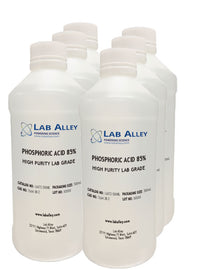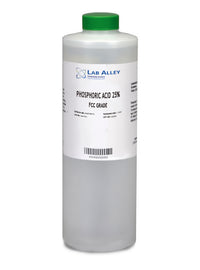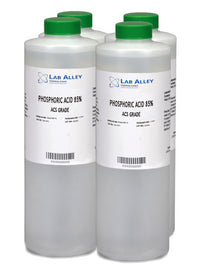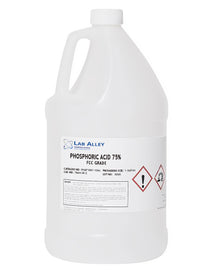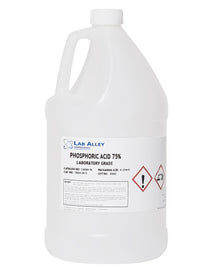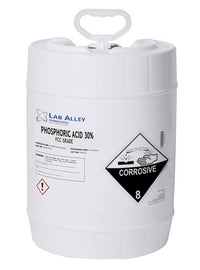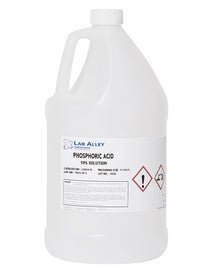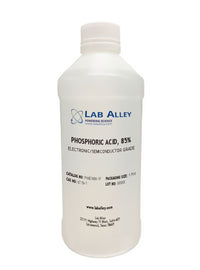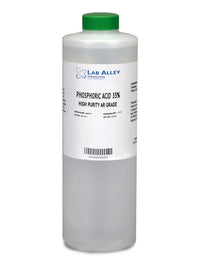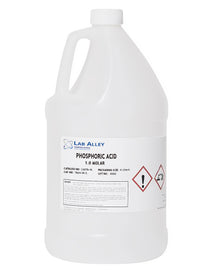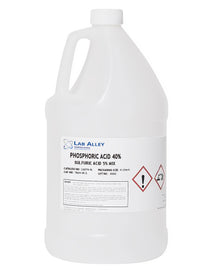Phosphoric Acid
For Fertilizers, Detergents, And Many Household Cleaning Products
About Phosphoric Acid
Phosphoric acid, also known as orthophosphoric acid, is a weak triprotic acid. Its most common form is in 75-85% aqueous solution, as a colorless and odorless viscous liquid; however, in its pure form, it is a white solid at room temperature and pressure. It is a cost-effective, widely available reagent with a wide range of applications.

The most common usage is in fertilizers, accounting for more than 75% of its use. Phosphoric acid is (generally) nontoxic with a tangy taste, and is therefore used in its food grade form (additive E338) as a pH modifier, flavor enhancer, and preservative, particularly in cola beverages. In dentistry, phosphoric acid is a useful whitening, cleaning, and roughening agent. In cosmetics and skin-care, it is a useful pH modifier. It also has useful reactivity for cleaning rust off of metal surfaces.
Common Uses and Applications
- Fertilizer
- Acidifying agent in skin-care/cosmetic products
- Acidifying agent in foods/beverages
- Sanitizing agent in food industry
- Dental cleaning
- Rust converter
Industries
- Food/dairy/brewing industries
- Cosmetics industry
- Agricultural industry
- Dentistry/orthodontics



